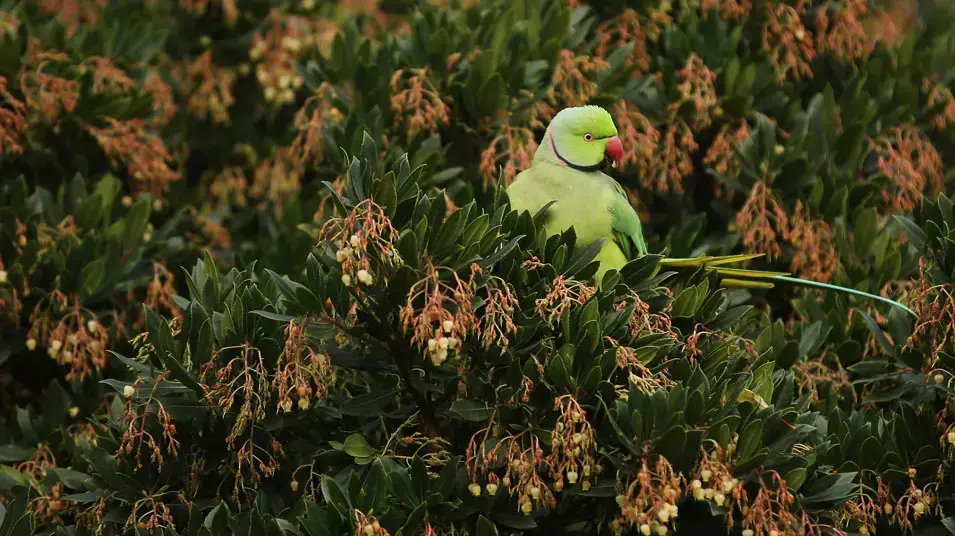Man dies from exotic bird attack (2019) 0:31
(CNN) -
The first human-reared bird may have been a cassowary, often called the world's most dangerous bird for its long, dagger-shaped finger.
Territorial, aggressive, and often compared to a dinosaur for its appearance, this bird is a surprising candidate for domestication.
However, a new study of more than 1,000 fossilized eggshell fragments, which were excavated from two rock shelters used by hunter-gatherers in New Guinea, suggests that early humans may have collected the eggs of these large flightless birds earlier. they hatched and then raised the chicks to adulthood.
The cassowary can be aggressive, but adapts easily to the first thing it sees after hatching from the egg.
(New Guinea is a large island north of Australia. The eastern half of the island is Papua New Guinea, while the western half is part of Indonesia).
"This behavior that we are seeing occurs thousands of years before the domestication of chicken," said study lead author Kristina Douglass, assistant professor of Anthropology and African Studies at Penn State University.
advertising
"And this is not a small bird, but a huge, intractable, non-flying bird that can gut you," he said in a press statement.
Investigators said that while a cassowary can be aggressive (a man in Florida was killed by one in 2019), it is easily "recorded".
This bird is attached to the first thing it sees after it is born, which means that it is easy to keep and breed until it reaches adult size.
Today, the cassowary is the largest vertebrate in New Guinea.
Its feathers and bones are prized materials for making body adornments and ceremonial clothing, and its meat is considered a delicacy there.
There are three species of cassowary and they are native to parts of northern Queensland, Australia, and New Guinea.
Douglass thought that our ancient ancestors probably bred the smallest species, the dwarf cassowary, which weighs around 20 kilograms.
This is what the cassowary leg looks like.
The fossilized eggshells were carbon dated as part of the study, and their ages ranged from 18,000 to 6,000 years.
Chickens are believed to have been domesticated by humans for the first time no more than 9,500 years ago.
They weren't a
snack
To reach their conclusions, the researchers first studied the eggshells of live birds, including turkeys, emus, and ostriches.
The interior of the eggshells changes as the developing chicks obtain calcium from the eggshell.
Using high-resolution 3D images and inspecting the inside of the eggs, the researchers were able to build a model of what the eggs looked like during the different stages of incubation.
"What we found was that a large majority of the eggshells were collected during the late stages," said Douglass.
"The eggshells look very late, it's not a random pattern," he explained.
Shells from a late stage indicate that people living at these sites collected eggs when cassowary embryos had fully formed limbs, beaks, claws and feathers, according to the study.
But did humans collect these eggs on purpose to hatch or eat?
It's possible both, Douglass said.
A cassowary chick photographed in a house in New Guinea.
Fully formed embryonic eggs are considered a delicacy in some parts of the world.
However, Douglass said, the research team's analysis suggests that the people were incubating the eggs.
"We also studied the (possible) burns on the eggshells," Douglass said in the news release.
"There are enough late-stage eggshell samples that don't show burns, so we can say they were incubating the eggs and not eating them."
A valuable resource
Less mature eggshells showed more signs of burning.
This suggests that in cases where cassowary eggs were consumed, they were cooked and eaten when their content was primarily liquid.
"In the highlands, today people raise cassowary chicks to adulthood to collect feathers and consume or trade the birds. It is possible that cassowaries were also highly valued in the past, as they are among the vertebrate animals. largest in New Guinea. Raising cassowaries from chicks would provide a source of readily available feathers and meat from an otherwise challenging animal to hunt in the wild as an adult, "he explained by email.
However, there is still much that researchers do not know.
There are three species of cassowary, and they are native to parts of northern Queensland, Australia, and New Guinea.
To successfully raise cassowary chicks, people would need to know where the nests were, when the eggs were laid, and remove them from the nest just before they hatched.
This is not an easy task, since the birds do not nest in the same places every year.
Once the female lays the eggs, the males take over the nest and do not leave for 50 days while they incubate the eggs.
"People may have hunted the males and then collected the eggs. Because the males don't leave the nest unattended, they also don't feed much during the incubation period, making them more vulnerable to predators," he said.
The research was published in the scientific journal PNAS on Monday.






/cloudfront-eu-central-1.images.arcpublishing.com/prisa/GLQIPWOC3VBT3BKZRNAZOQJEQU.jpg)


